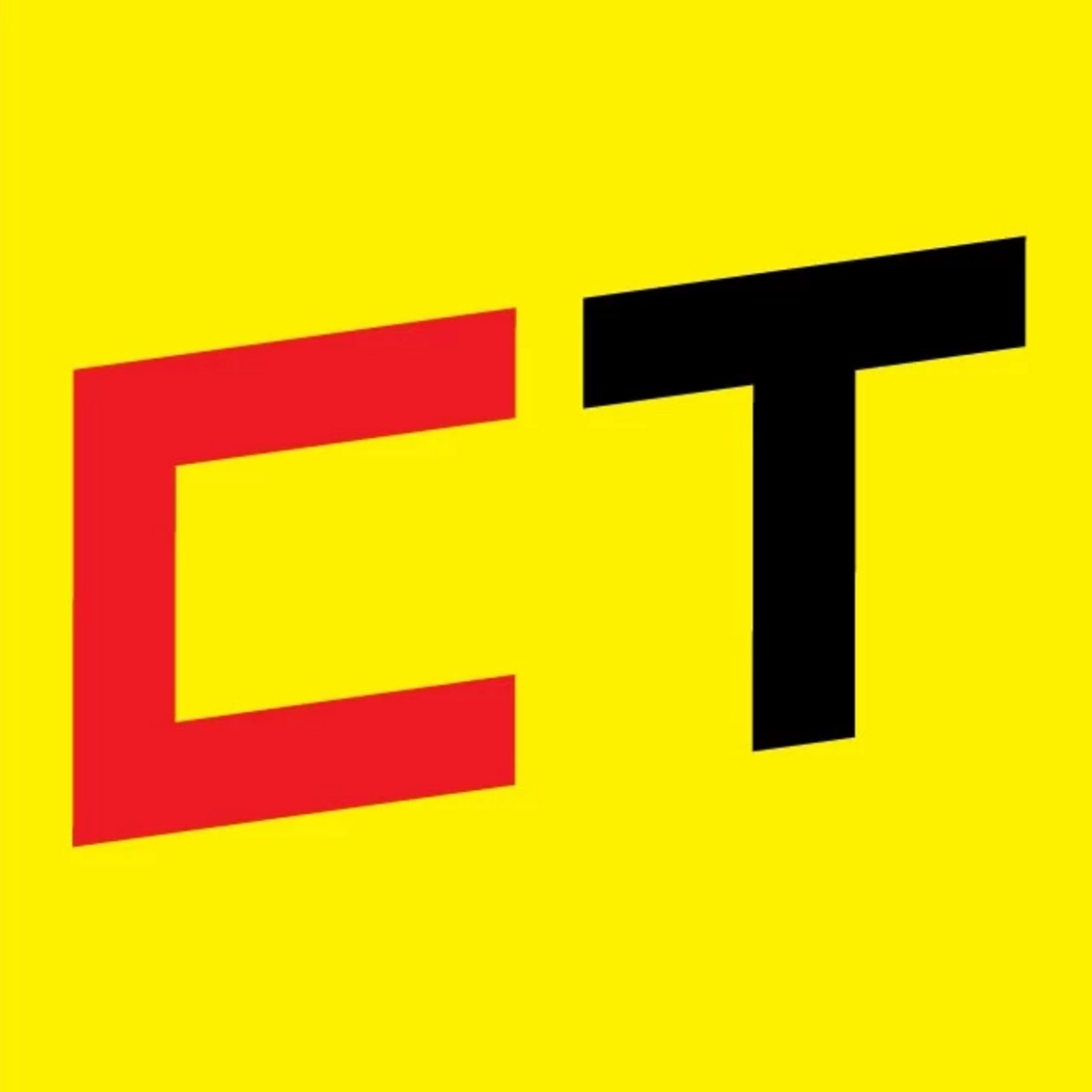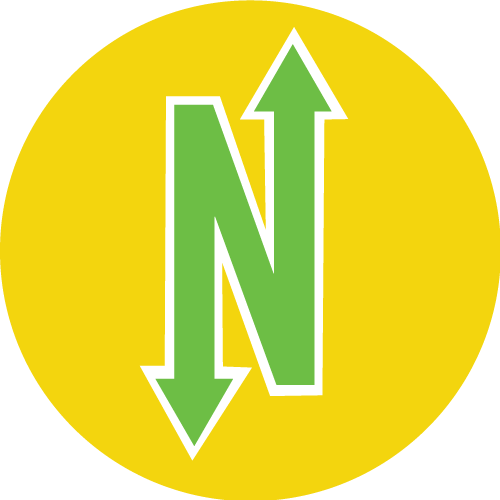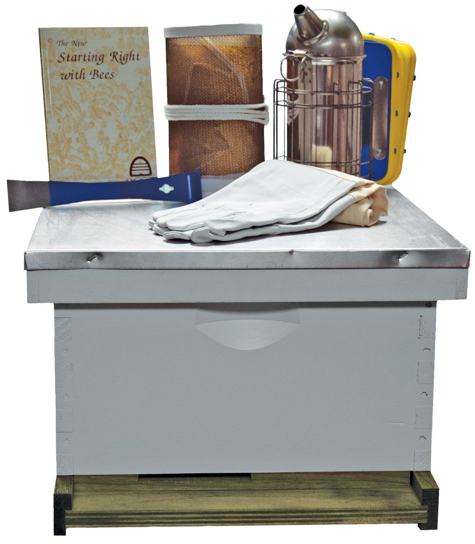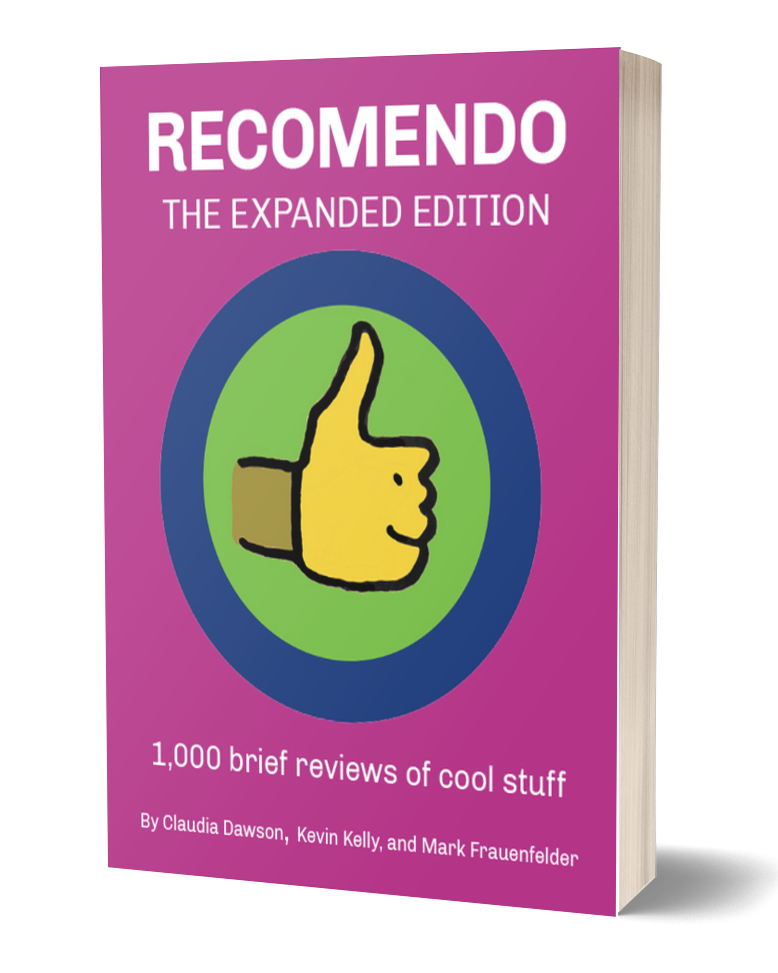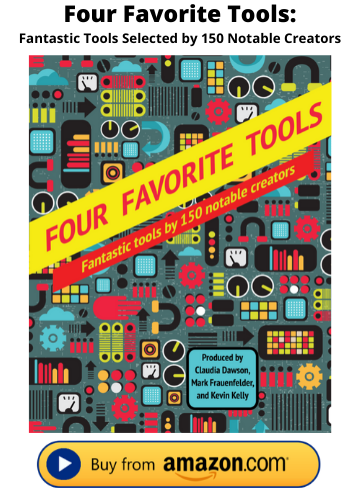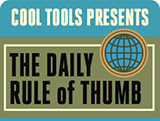09 July 2025
Book Freak 185: Die with Zero
An approach to personal finance that emphasize maximizing life experiences over wealth accumulation.

This approach to personal finance focuses on maximizing life experiences rather than wealth accumulation. Perkins challenges conventional wisdom about saving and retirement, showing how delaying gratification too long leads to wasted life energy and missed opportunities for meaningful experiences. Die With Zero provides a framework for balancing present enjoyment with future needs.
Core Principles
Strategic Timing of Experiences
Certain life experiences have optimal timing windows based on your health, wealth, and time availability. Rather than indefinitely delaying gratification, invest in peak experiences when you have the physical ability and mental capacity to fully enjoy them.
Memory Dividend
Experiences provide both immediate enjoyment and ongoing returns through memories that can be relived and shared. Unlike material possessions, positive experiences appreciate in value over time through the “memory dividend” of recollection and storytelling.
Peak Net Worth Planning
Rather than maximizing wealth until death, identify your optimal “net worth peak” —s the point when you should start spending down assets to maximize lifetime fulfillment. This typically occurs between ages 45-60 when you still have good health to enjoy experiences.
Try It Now
- Calculate your annual baseline cost of living to determine your minimum survival needs
- List key experiences you want to have and map them to specific time periods in your life
- Take an inventory of your health, time and money to identify your current optimal balance between earning and spending
- Start tracking your “fulfillment curve” by rating experiences on a numerical scale
Quotes
“The business of life is the acquisition of memories. In the end that’s all there is.”
“If you spend hours and hours of your life acquiring money and then die without spending all of that money, then you’ve needlessly wasted too many precious hours of your life.”
07/9/25
08 July 2025
Drinky Crow Drinks Again / Daytripper
Issue No. 74
MORE SEAFARING, SUICIDAL BIRD BOOZING AS DRINKY CROW DRINKS AGAIN
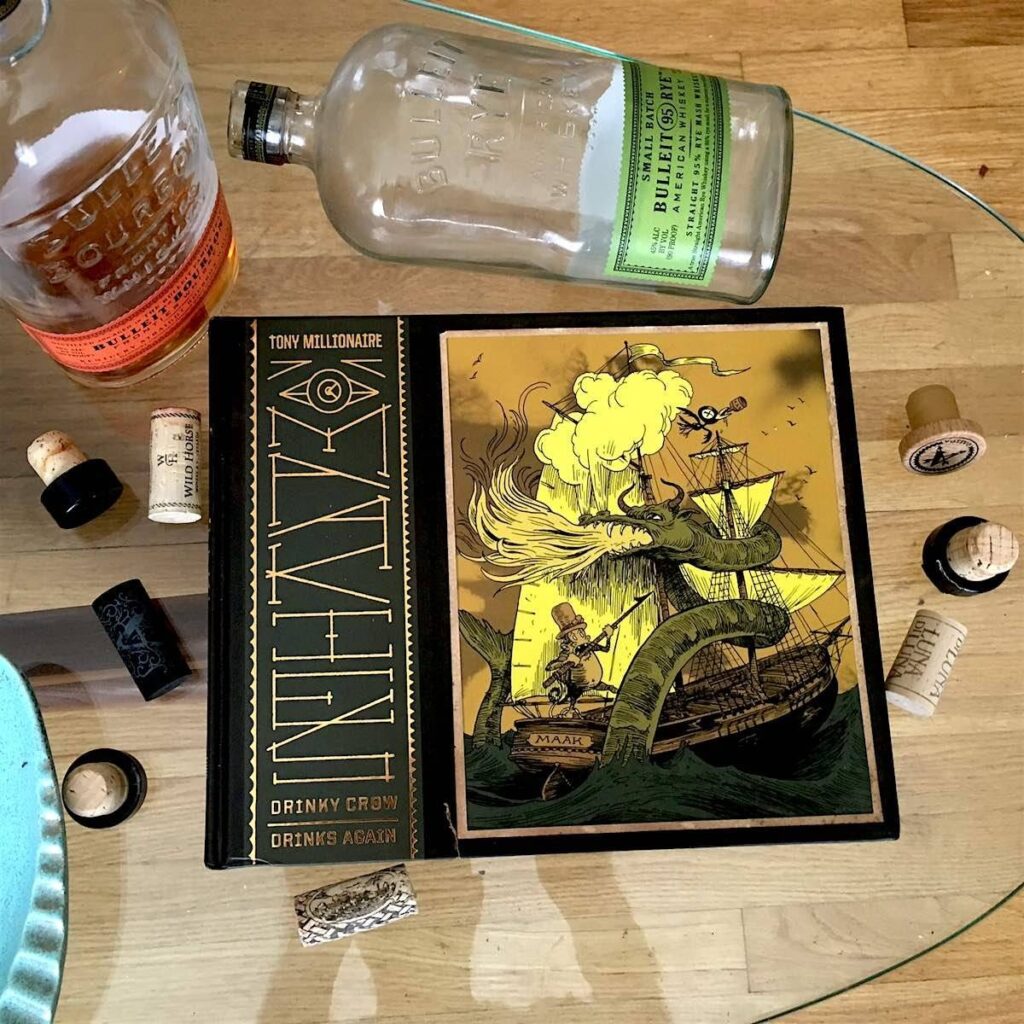
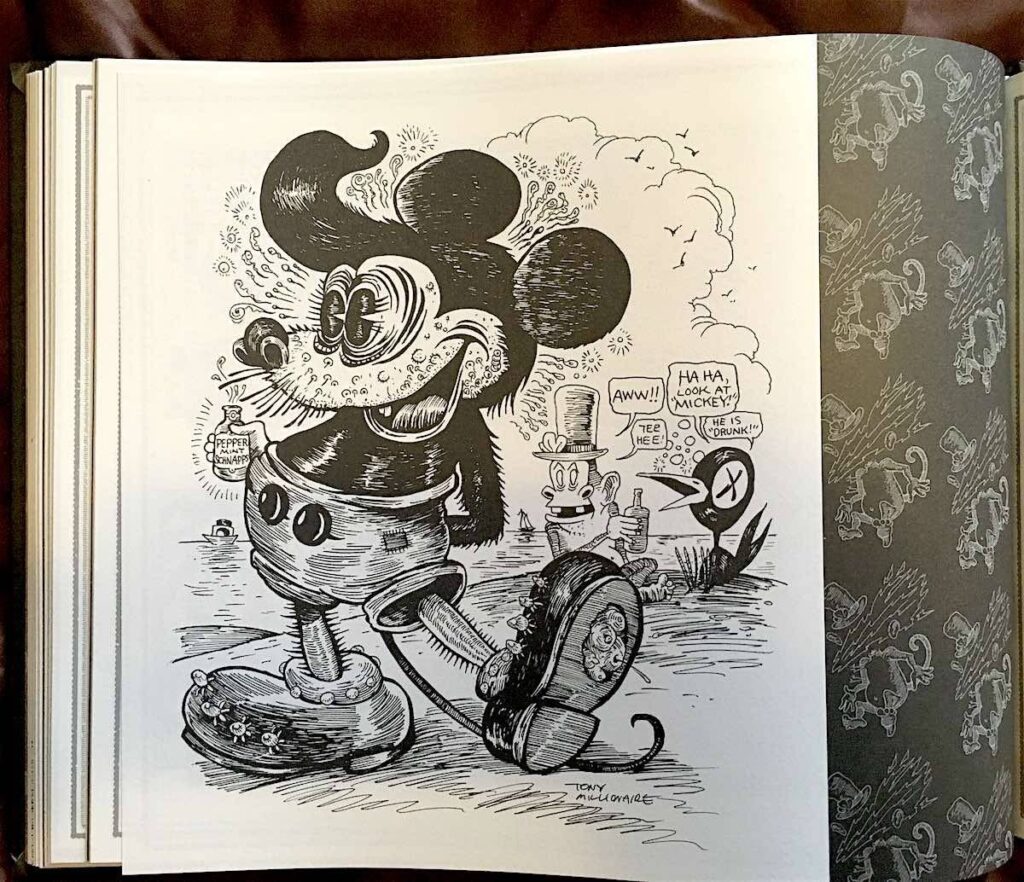
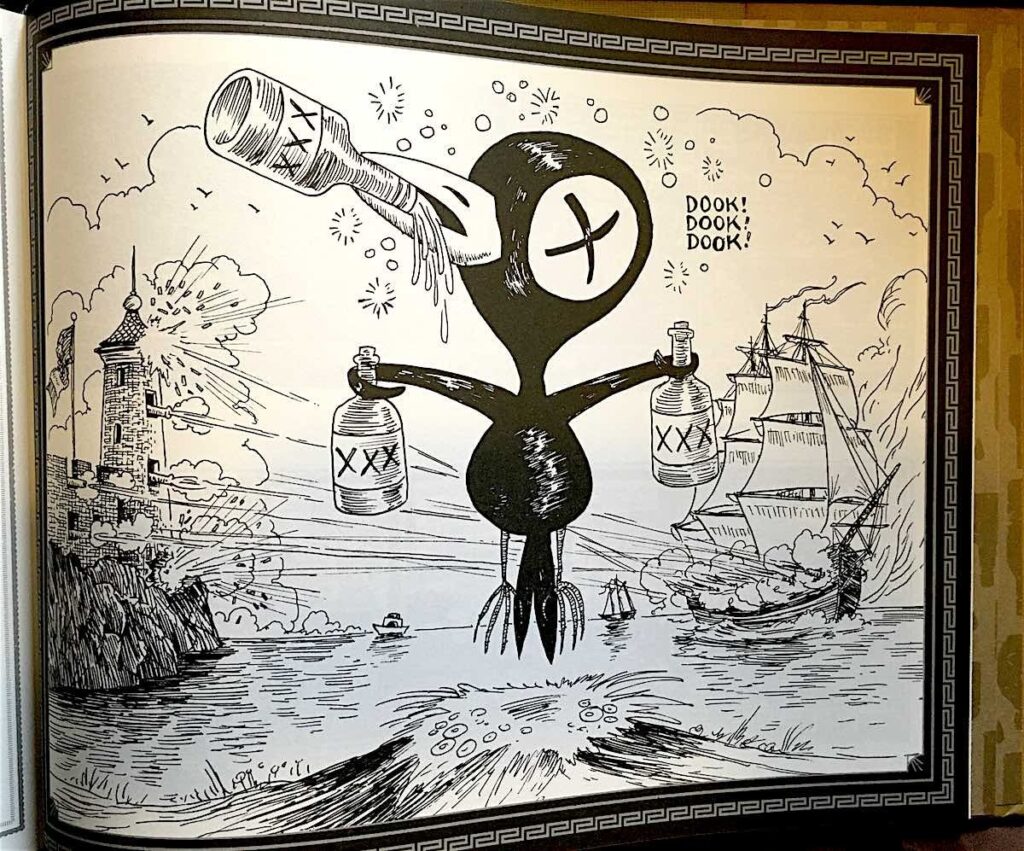
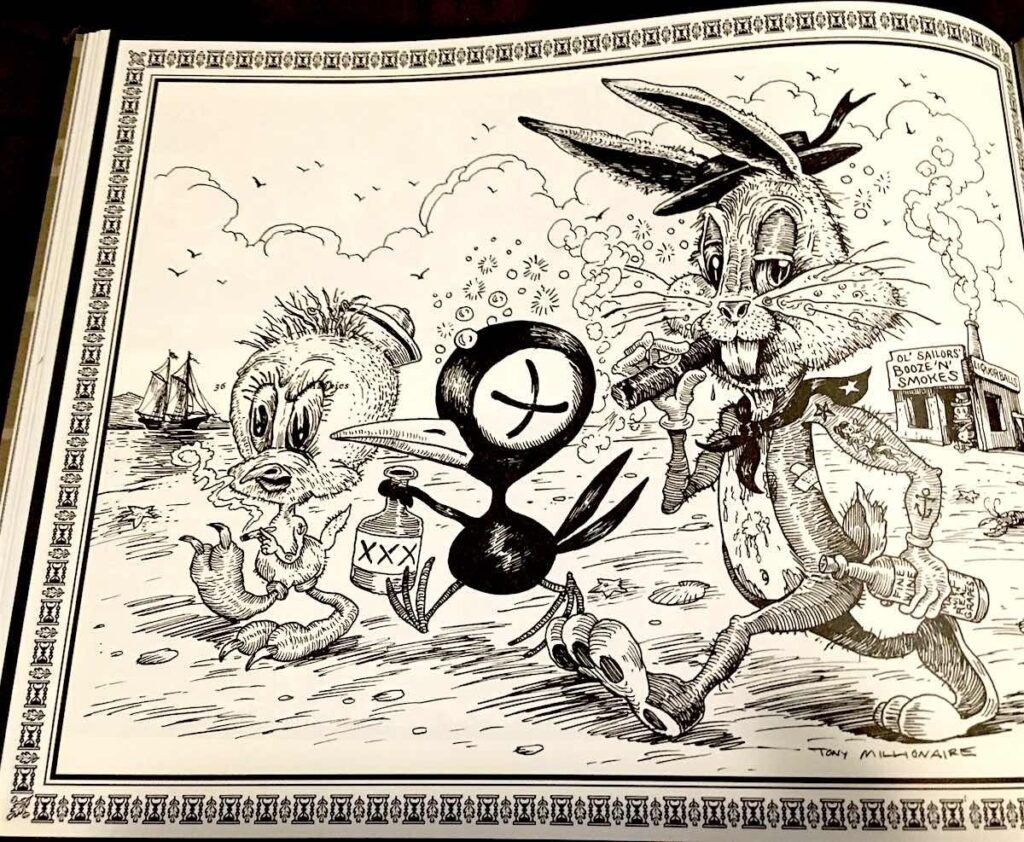
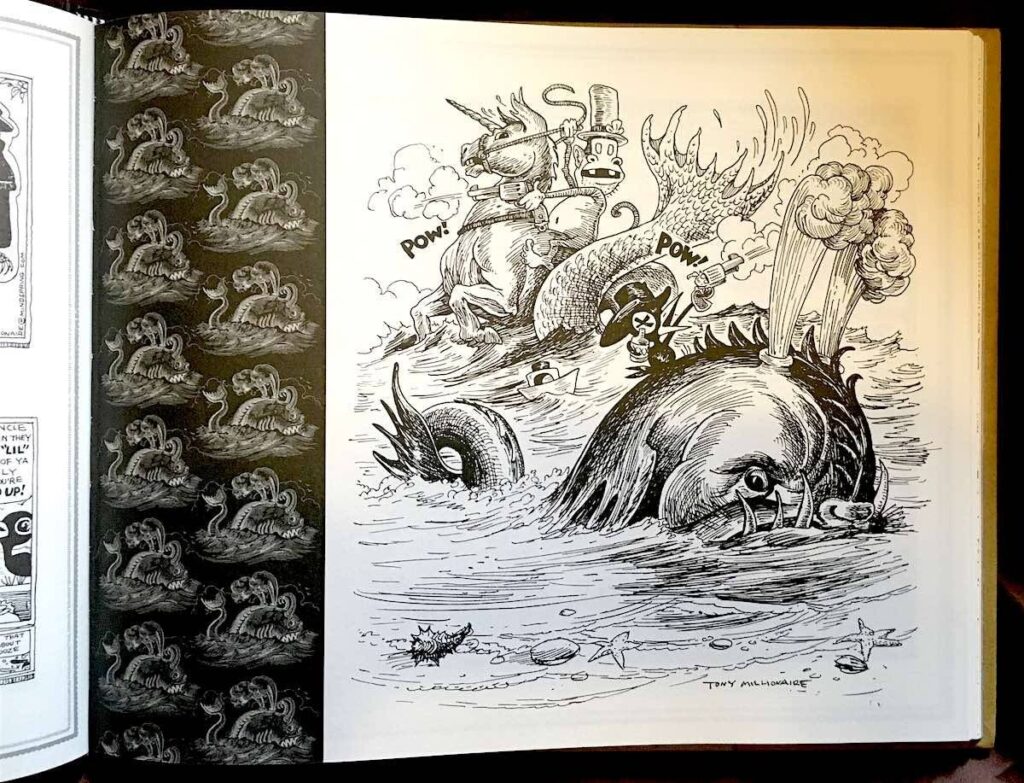
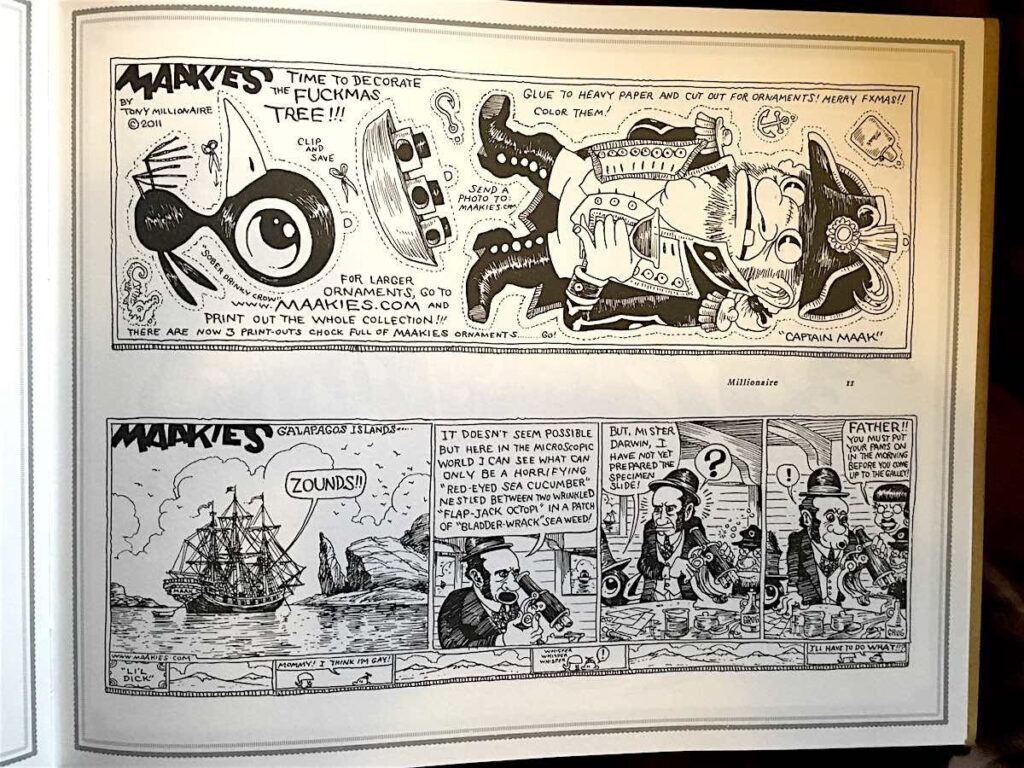
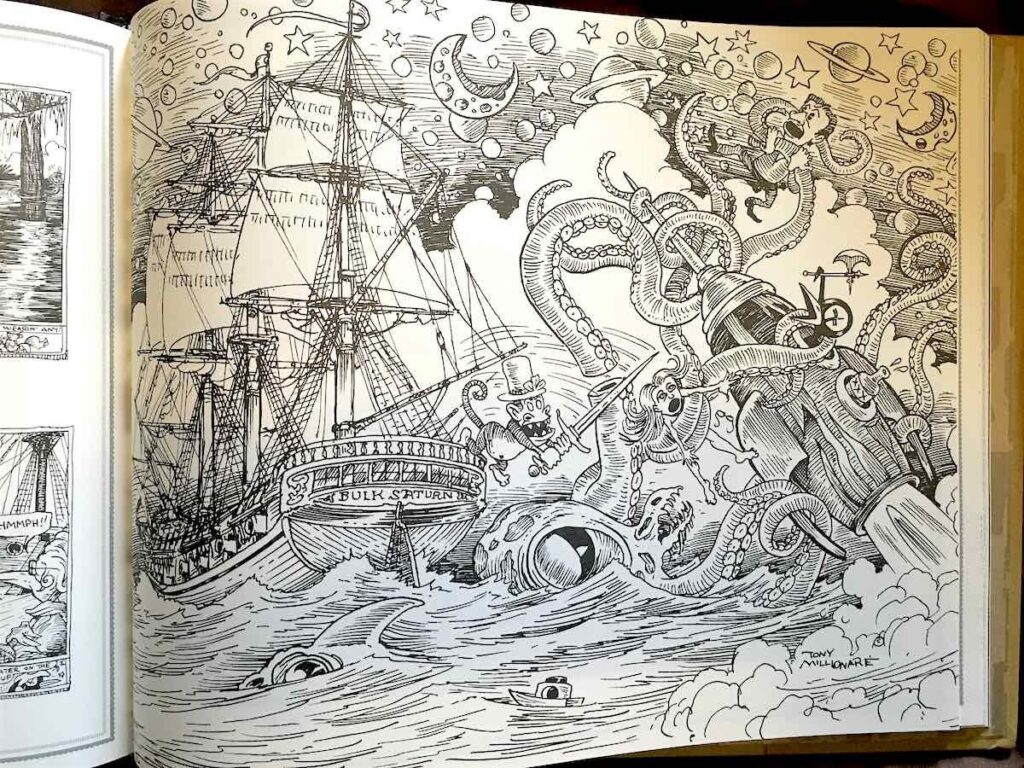
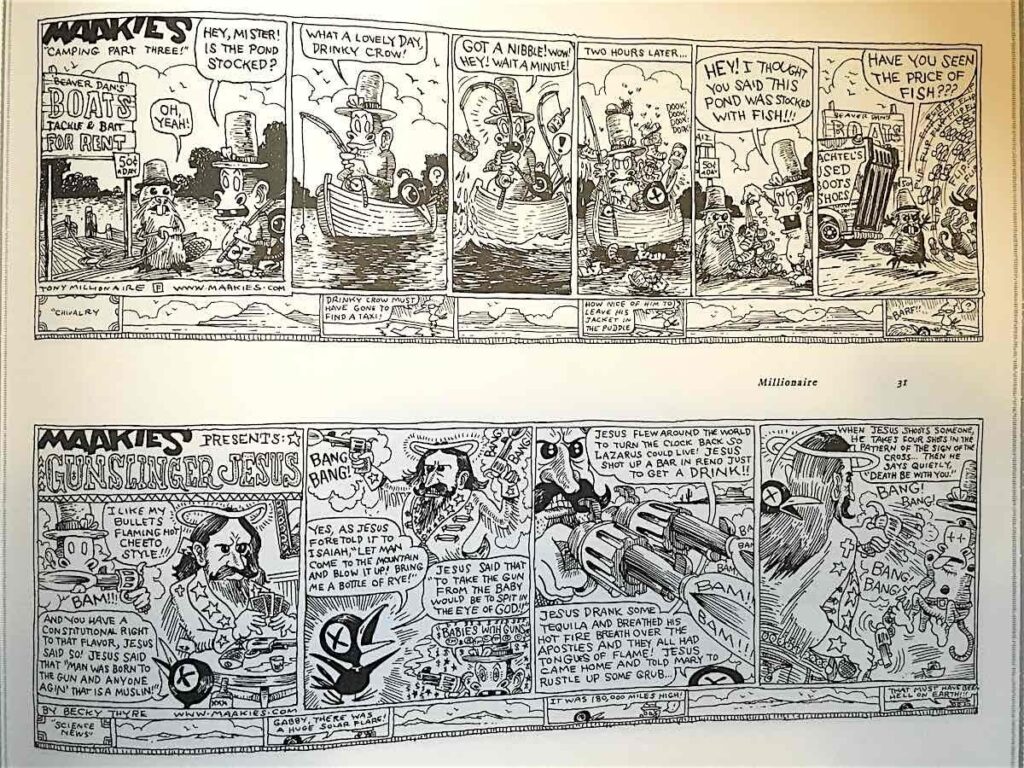
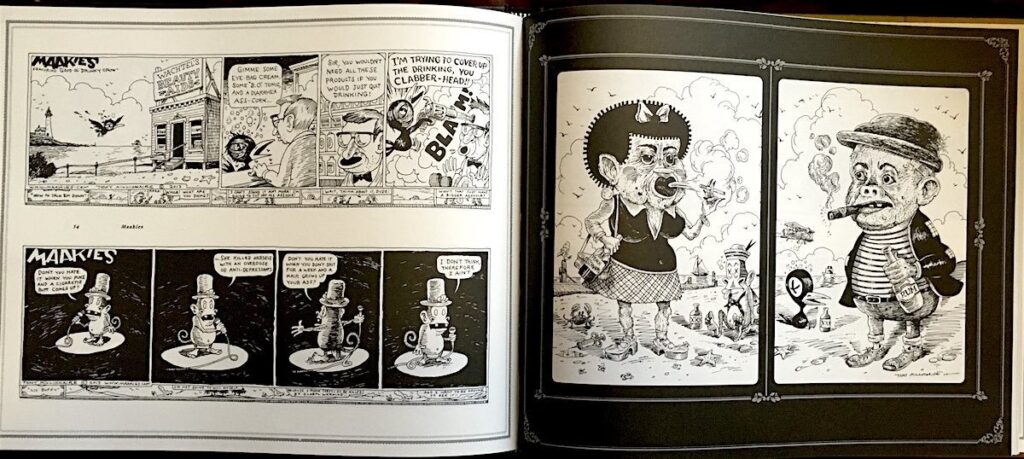
Drinky Crow Drinks Again
by Tony Millionaire
Fantagraphics
2016, 128 pages, 10.8 x 8.8 x 0.7 inches (hardcover)
Captain Maak (captain of the ship), Uncle Gabby (the Irish monkey), Gunslinger Jesus, Phoebe Bird, and everyone’s favorite violent, binge-drinking, suicidal avian anti-hero, Drinky Crow, are all back and more beautifully bizarre than ever in Maakies: Drinky Crow Drinks Again. From the confident, well informed, but often fevered hand of well-known American weekly comic strip artist Tony Millionaire, comes this new Fantagraphics landscape hardback collecting recent syndicated strips (along with some additional material). The book is as handsome as you’d expect, coming from this artist and this publisher (even if it’s the first Maakies collection not designed by Chip Kidd).
You never know what you’re going to get from Tony Millionaire, but you know it will never be boring and it will always be beautifully rendered. Even more so than most, Millionaire’s comic strips feel like you’re mainlining the author’s own insane membrane, watching him think out loud and exorcising his demons with pen and ink on paper.
The incredibly meticulous old-school draftsmanship, the many allusions to old comic strips and classic art, lots of clever twists and brilliant pay-offs, strips that dead end, and ones that go completely off the rails, often ending in violence or suicide – it’s not always the smoothest ride, but it’s one you’re compelled to take, even if just for the gorgeous scenery. Luckily, Tony Millionaire, Maakies, and Drinky Crow have far more riches to offer than that. – Gareth Branwyn
MOON AND BÁ’S DAYTRIPPER IS A MASTERFUL NOVEL BY ANY METRIC
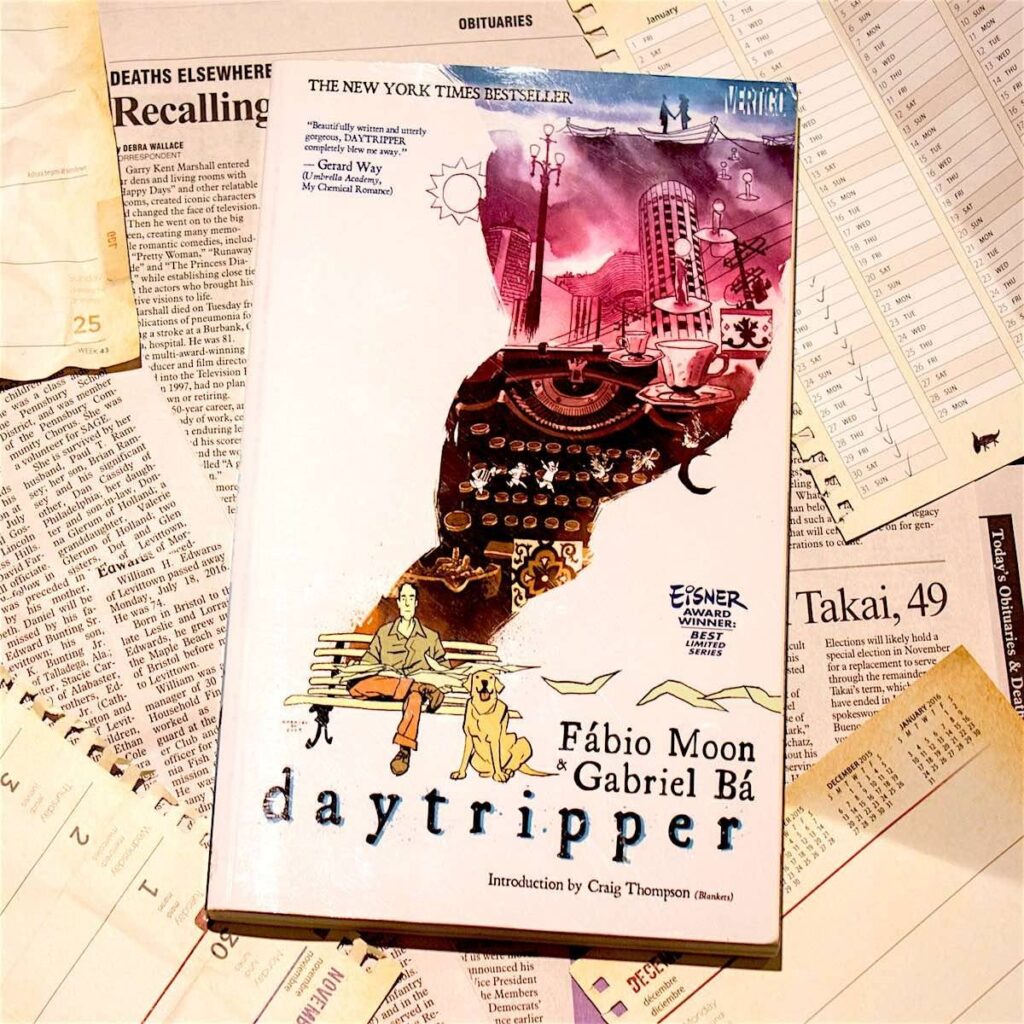
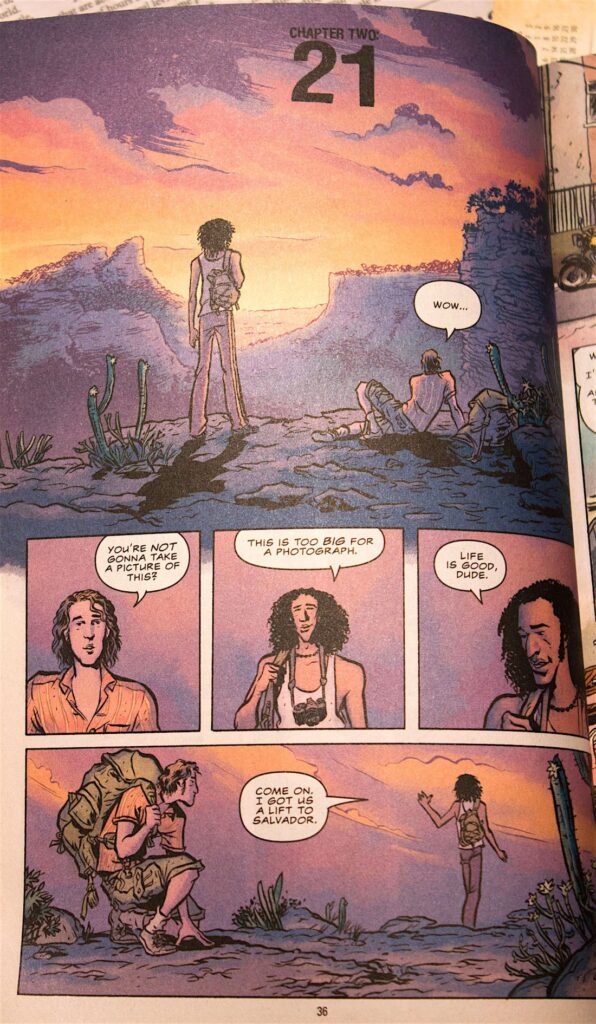
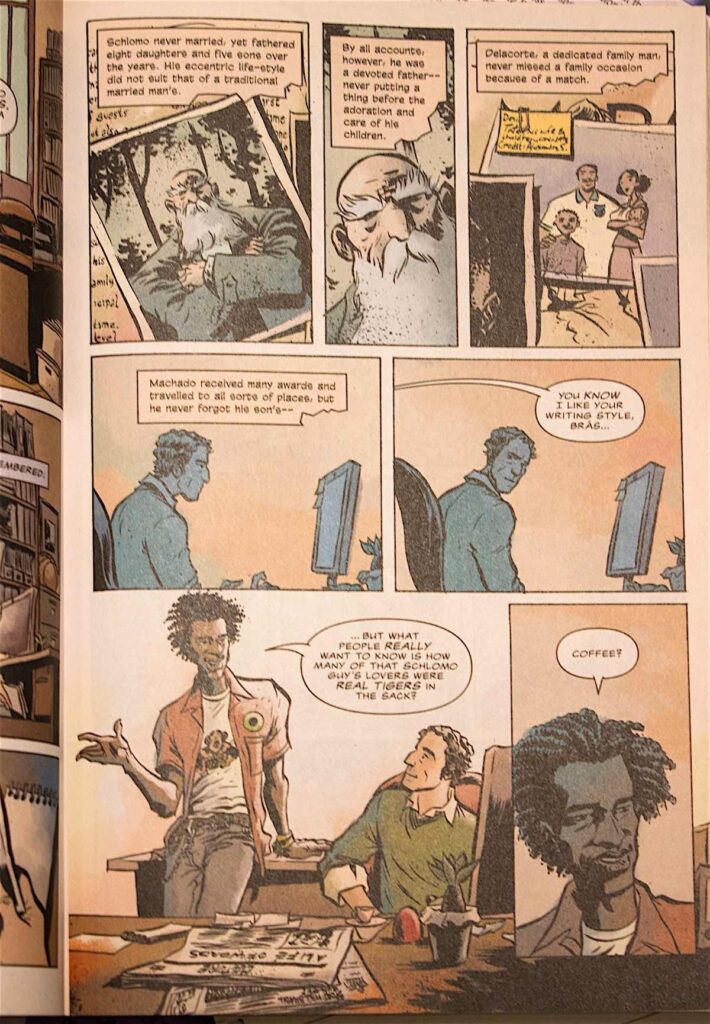
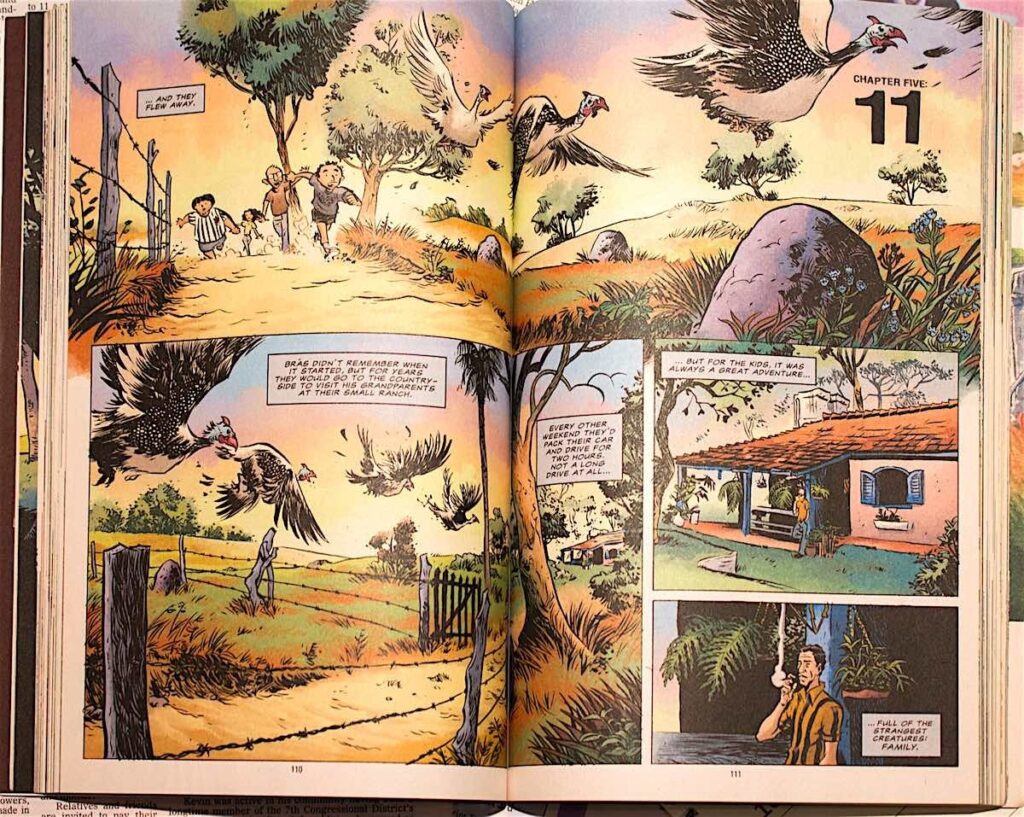
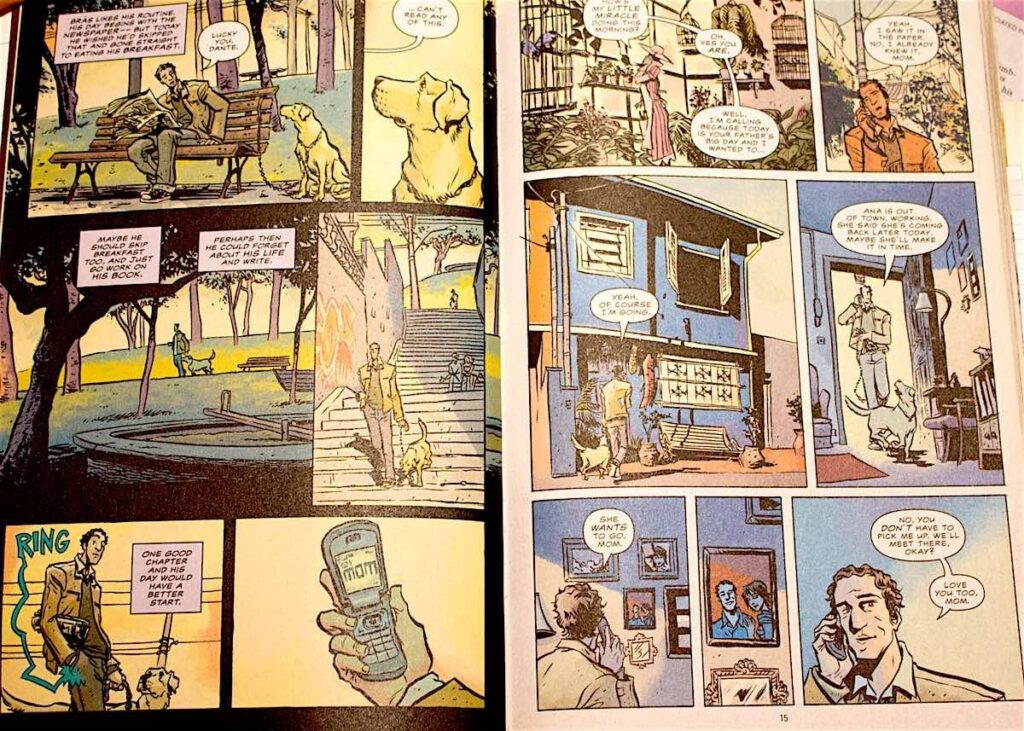
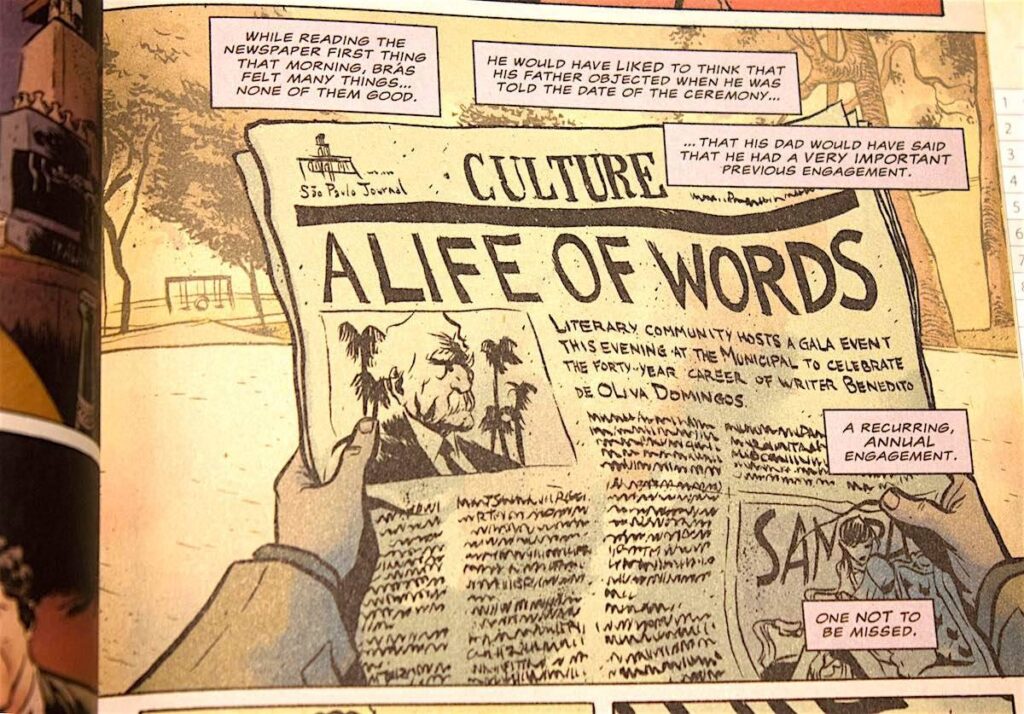
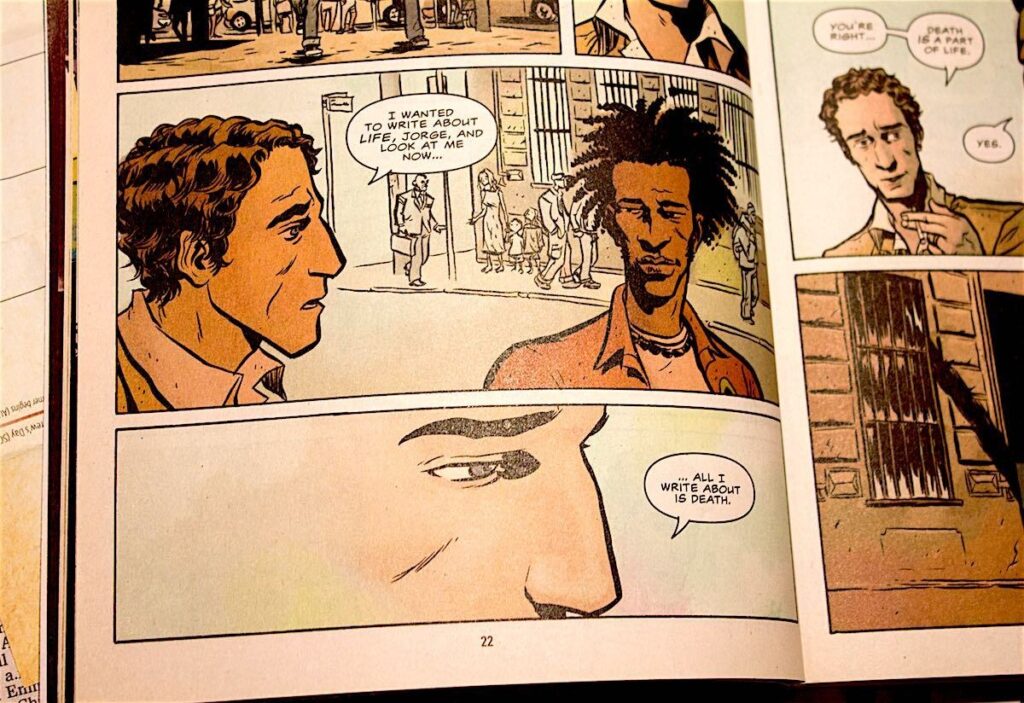
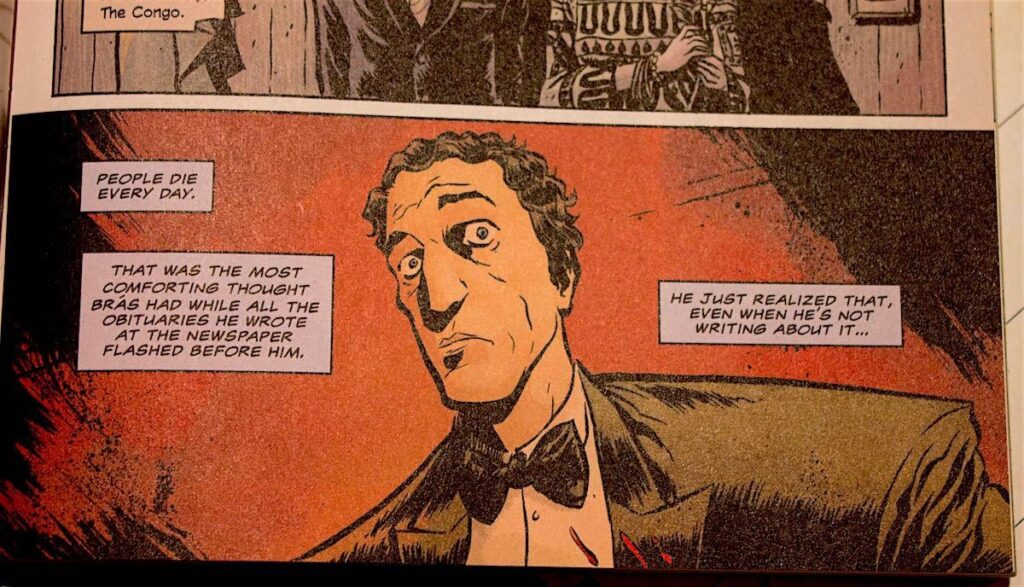
Daytripper
by Gabriel Bá and Fábio Moon
Vertigo
2011, 256 pages, 6.7 x 10.2 x 0.5 inches (softcover)
I don’t think it would be too hyperbolic of me to say Daytripper is one of the best graphic novels I’ve ever read. It’s a big story told in small moments. The epic, emotional core is powerful and life affirming, but brothers Fábio Moon and Gabriel Bá get there through the lightest touch of character.
Without giving too much away (because there is so much to discover), the story is about Brás de Oliva Domingos, an aspiring novelist stuck writing newspaper obituaries. His life is both unique and unremarkable, and we meet Brás at a different age in each chapter. Theses ages are told in a non-linear fashion, and mostly feature life-changing moments. The twist is that these moments rarely seem life changing as they are happening, as is usually the case in real life. We live each day as if it is any other, only noting the important bits later.
For Moon and Bá, recognizing the personal is a matter of life or death. Brás spends most of the book pining for more in his life, always dissatisfied with where he is. It’s as if he’s constantly waiting for his “real life” to begin. Moon and Bá suggest that life isn’t the point when you finally find the success you’ve been craving, or when you finally meet the love of your life, or any number of other things. Your life is now, today, in whatever situation you happen to be in. Life is happening all around you, and it’s crucial that you not miss it.
The storytelling alone is incredible, but the art pushes the novel to even greater heights. Moon and Bá employ a realistic style that makes their São Paulo feel like the real city. This is crucial considering the more fantastic elements they periodically introduce into the book; they tiptoe across magical realism, and the art helps to keep you grounded. Their work is incredibly rich in detail, while the color has an almost sun bleached quality to it that appears lifelike. This is a masterful novel by any metric. – Alex Strine
Books That Belong On Paper first appeared on the web as Wink Books and was edited by Carla Sinclair. Sign up here to get the issues a week early in your inbox.
07/8/2507 July 2025
Outdoor Wear
Tools for Possibilities: issue no. 145
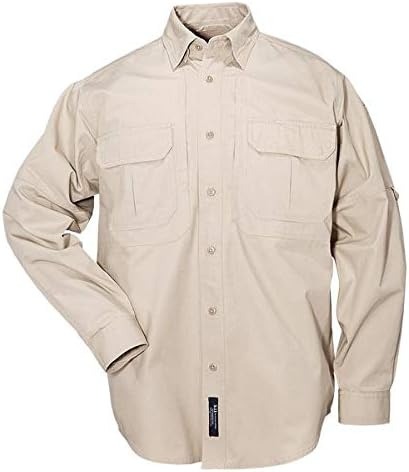
Cop shirts
I have five now and plan to get more. The 5.11 does everything I want in terms of comfort and pockets and yet looks dignified enough to serve as duty shirts for police, who are its primary market.
The 5.11 Tactical shirt is based on Royal Robbins’ excellent Expedition Shirt (which I’ve praised elsewhere in Cool Tools); the main difference is that it’s 100% cotton. The most appealing functional features for me are: 1) large document pockets hidden on each side of the shirt front (my cell phone/PDA lives in one, my Levenger notepad in the other); 2) a subtle vent on the back, with non-cotton wicking lining for the back and shoulders (which makes it a four-season shirt, good with or without a T-shirt underneath); and 3) the best keepers for rolled shirtsleeves (also a help for four-season use or variable weather).
Appearance features: 1) nifty upper-sleeve pen pocket, an improvement on noising up your chest with metal in a breast pocket; 2) shirt buttons that are colored to blend in with the fabric color, so you’re not a row of dots; 3) velcro pocket closures, less conspicuous and handier than buttons; 4) sensible colors. There are optional features of interest to cops but not to me—hidden button-down for collar, sew-on epaulets, sew-on badge holder.
The shirt is available for women as well as men. Also comes in a short-sleeve version. Colors are white, sage, khaki, olive green, charcoal, navy blue, and black; I most like the green and black. (There is a variation of the 5.11 shirt called “A/B” which I suggest avoiding. It’s too coppy—sewn-in pleats, epaulets, and badge-holder, and an unpleasant synthetic material emphasizing rayon. Get the cotton.) — Stewart Brand
The 5.11 tactical shirt is simply the best field/hiking shirt I have owned. If you are the kind of person who juggles maps and notebooks while outdoors, this is the only shirt to wear. At first glance, it looks like a typical hiking shirt, but the difference is in the details.
For example, the “Napolean” pockets ( large horizontal velcro-closed slash pockets behind the visible breast pockets) are huge –7-inches by 8-inches. Large enough to comfortably hold a folded topo map and notepad in the field or a wallet and and a PDA in town. The pockets were originally designed to hold pistols for cops, so one can comfortably carry heavy objects in them. Other details include pen slots on the left pocket and the upper left sleeve. The right pocket has a hidden zipper to securely store small items, and the sleeves have the first practical roll-up keepers I have found.
This is a truly versatile shirt, that fits in anywhere from the Sierra to casual business meetings. I was grateful to have all those pockets recently while standing on a wilderness ridge in a driving rain at midnight, juggling a radio and map and scribbling on a rite-in-the-rain pad. But I also wear my navy blue version of the shirt (I own five) as my standard casual business dress. It goes nicely with khaki dockers and lets me carry my wallet and other junk without resort to the usual pants-pocket bulge. — Paul Saffo

Utilitarian daily-wear vest
My Filson Mackinaw Vest is the single most utilitarian piece of clothing I own. And during the fall, winter, and early spring I wear it nearly every day. We’ve reviewed Filson in the past. They have a legendary reputation among hunters and outdoorsman for wool clothing that stays warm when wet, and holds up over time. This holds true for this vest, but I love it because it’s just as functional at home or in an office as it is in the field.
It also features two chest pockets; the right easily fits a notepad, while the left is designed for holding writing instruments, or other tools (I keep a Maratac AAA flashlight, and a few pens and pencils).
Most vests are NOT built for daily wear. Stitching comes undone, fabric begins to tear or pill, and in general they become limp and lifeless after just a few months. The beauty of the Filson is that its heavyweight felted wool and heavy-duty stitching make it near bulletproof. It doesn’t shed, pill, or wrinkle, and it looks good day in and day out. And because it’s a vest made of thick felted wool it can be worn over three seasons and across a really wide temperature range. — Oliver Hulland
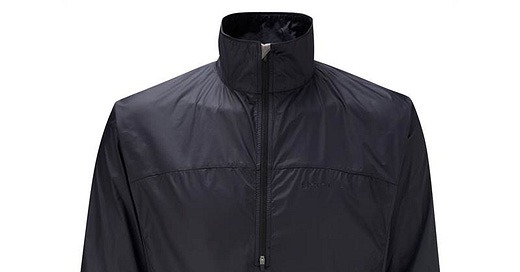
Ultralight windbreaker
When folded into its stuff sack, this Pertex windshirt is the size of a small apple and weighs only about 100g. Unlike a “real” coat, the smock can disappear into a jacket pocket or cargo pocket of your combat pants or it can lurk, weightlessly, for weeks in a backpack until needed. Other than being a carry-all-the-time item allowing minimal bulk, it’s extremely versatile. It blocks the wind, preventing windchill, while still feeling as breathable as a lightweight cotton t-shirt. Pull up the neck zip and the smock will trap a layer of air around your body. Because the smock keeps this air dry instead of letting it saturate with sweat, it’s a superb insulator: the ground outside has been white with frost recently, but I’ve been quite happy walking around with the smock over my sweater (about 0 Centigrade). Shower resistant, but not waterproof, it’s much more breathable than anything I’ve tried that is waterproof — while Goretex may transmit about 25% of water vapour in even ideal circumstances, Pertex scores closer to 100%. As such, the windshirt is a great outer layer for hikers, cyclists and runners to wear in all conditions where real rain wear isn’t essential. It’s also terrific for commuting and tourism, especially when added to a light umbrella, which allows you to leave heavier-to-carry and sweatier-to-wear just-in-case clothes at home. — Jonathan Coupe
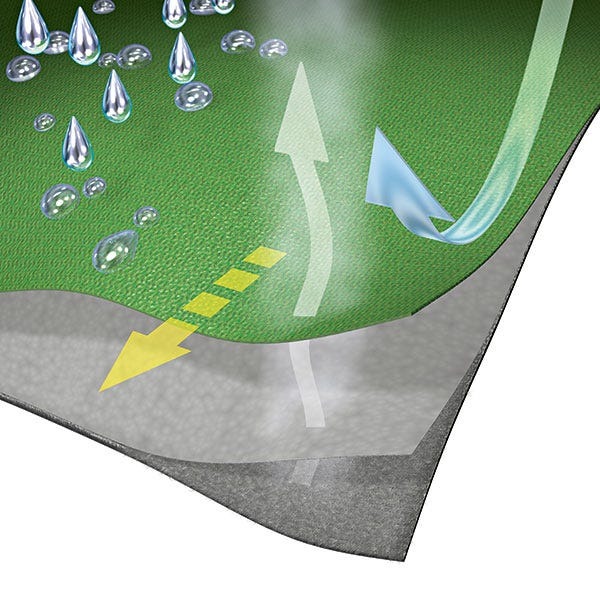
Maximum movement with maximum comfort
My latest revelation in gear: all the new outdoor clothes I really like share this common thread, that they are made of hi-tech softshell fabrics produced by the same Swiss company, Schoeller. Softshell outdoor clothes are more than just stretchy. They mark a better way of constructing the clothes that you wear while exerting energy. Essentially the Schoeller fabrics are similar to GoreTex but they are more permeable and they stretch. This allows much more free motion, more breathability, and allows the clothes to fit tighter saving material weight.
Softshells shed moister/heat/sweat *much* faster than GoreTex and they are super comfy at the end of the day around camp or even in your sleeping bag. However my favorite characteristic of these new fabrics is that they act similar to fleece so that they keep their ability to insulate and feel good against the skin even if they are saturated with water, whereas hardshell fabrics just feel like wet plastic bag against your body. These Schoeller fabrics are super good for cycling, climbing, and mountaineering… basically sports where you sweat. I still like hardshell garments for sailing and snowboarding where for the most part you are being eaten by the wind and weather.
The best softshell clothing companies I have found:
- Cloudveil: Excellent pants and tops
- Arcteryx: Bad web site, amazing gear all around. They also have hybrid soft/hardshell clothes that I have yet to try but look very promising.
- Beyond Fleece: Allows you to customize the gear you order. Add pockets, hoods, waterproof zippers etc…
Much of this gear is prohibitively expensive, like $300 for a jacket. I usually go to local dealers and figure out the sizing and then shop around on the outlets. — Alexander Rose
Once a week we’ll send out a page from Cool Tools: A Catalog of Possibilities. The tools might be outdated or obsolete, and the links to them may or may not work. We present these vintage recommendations as is because the possibilities they inspire are new. Sign up here to get Tools for Possibilities a week early in your inbox.
07/7/2506 July 2025
Easy dashcam/Word Pathfinder/Free Office software
Recomendo - issue #469
Easy dashcam
I wanted a dashcam that was easy to use and install. The Redtiger F7NP is both. The included plastic pry tool let me neatly tuck the power cable under my car’s trim. The cigarette lighter adapter has a built-in USB port so you don’t lose your phone charging spot, and the 32GB memory card comes included (no separate purchase needed). The 4K front camera delivers crystal-clear video that makes license plates easily readable, even at night. You can view videos via phone or desktop app. (It comes with a rear camera, but I haven’t installed it yet.) — MF
Find the path between two words
Word Pathfinder is a concept explorer that maps the connections between any two words. I’ve been using it to discover associations between seemingly opposite symbols in dreams, though I’m sure there are many other ways to use it. — CD
Free Office software
There is really no reason to pay Microsoft for access to Office (renamed Microsoft 365). You can open, or generate, an Excel spreadsheet, Powerpoint presentation, or Word doc in free Google Drive with okay accuracy (PPT slides can be problematic). If you did need to maintain strict formatting beyond what Google can do, Microsoft now offers a free version of Office/Microsoft 365 on the web. You need a (free) Microsoft account. The web app seems to pretty identical to the standard paid versions of Excel, PowerPoint, and Word. — KK
Free book cover mockups
From my own experience, it’s surprisingly hard to find a good mockup creator that’s truly free. Most sites claim to be free but add watermarks or require you to sign up. I’ve been using this 3D Book Cover Creator for a few years now, and it has always stayed free. If you think you might need one in the future, I’d suggest saving this now to save time later. — CD
AI meeting assistant
I used to frantically scribble notes during video calls until I discovered Granola ($18/month after 25 free meetings). This AI notetaker records meetings across Zoom, Microsoft Teams, and Google Meet without requiring the user to join as a participant, unlike other meeting bots. It automatically generates transcripts and meeting notes, and creates shareable links that let attendees ask follow-up questions that Granola can answer based on the recorded content. — MF
Prompt theory AI
Prompt Theory is a viral internet meme that has the potential to stay awhile. The theory is that the characters in an AI generated video realize that they are only disposable AI generated characters and have no free will inside their video lives. Multiple videos depict them courageously talking about their suspicion, their “prompt theory,” that they are not real, not even actors. But only crazies believe in this prompt conspiracy. Do I need to say that 100% of this was AI generated with prompts? The truth is all very meta. A few examples on Twitter, or X, where it began, and on YouTube and more YouTube. — KK
Sign up here to get Recomendo a week early in your inbox.
07/6/2503 July 2025
Thin Sun Protection/No-flight Zones/Uber Price Differences
Nomadico issue #161
Versatile Sun Protection Up Top
If you’re like me and don’t have a full head of hair on top, going into bright sunlight without a hat can be dangerous. A hat doesn’t work well though when snorkeling, riding a bike with ventilation holes, or on a windy boat. In those cases I switch to a Buff-style cloth tube that’s versatile and easy to pack. You can see plenty of options on Amazon from Buff here and they work well for covering your neck too. If you get another brand, make sure it has a UPF factor listed though as the thinly-woven ones you can see light through won’t keep out the UV rays.
Flight Holes on the Globe
There are some conflict zones in the world that are off-limits to aircraft, no matter how high up they are, and the escalating battles in the Middle East have shut out more areas. The square mileage of conflict zones has increased by 65% since 2021, according to this risk consulting company report. While Air Emirates and Qatar Airways are two of the best airlines out there, in the near term you may want to avoid their connecting flights through Dubai or Doha until a cease-fire holds.
Uber Ride Price Differences
I have both Uber and Lyft on my phone and am surprised by how different the rates can be sometimes for the same distance. Different markets have different price levels too though and this study of Uber prices lays out the most expensive and the cheapest in the USA. They used a 30-minute ride for the comparison and found that Seattle was the worst, averaging more than $60, while Cheyenne (WY), Reno, and NYC were next. Pay far less though in Indianapolis, Fort Worth, Miami, or Houston, where you’re more likely to pay around $30. (Meanwhile, an international study found that a 48-kilometer airport to center Uber ride in Seoul was $57 but a 34km ride in Hong Kong was $240.)
Small Ships That Fit in Harbors
I’ve mentioned the attractions of small ship cruises before on Nomadico because I’ve done ones with Scenic, Viking, Uncruise, Sun Fun You, and others over the years when working on travel articles. Last December I was on my biggest one yet, but big is a relative term. With a capacity of 312 guests when packed out, the Windstar ship we were on still felt intimate and we were able to pull into small harbors in places like Livorno, Genoa, and Nice. When we passed one of the giant floating hotel ships as we arrived in Barcelona, we looked like a butterfly buzzing past an ox. See my story on this Mediterranean small ship tour in Perceptive Travel.
A weekly newsletter with four quick bites, edited by Tim Leffel, author of A Better Life for Half the Price and The World’s Cheapest Destinations. See past editions here, where your like-minded friends can subscribe and join you.
07/3/2502 July 2025
What’s in my NOW? — Steven Ovadia
issue #217
Steven Ovadia is a father, writer, and librarian.
PHYSICAL
- Self-syllabus – Every few months, I make a physical list of books I want to read. It’s not everything I want to read. It’s just the ten or so books I want to get through next. Sometimes it’s thematic. Sometimes it’s not. But it makes it easier for me to get through my reading list, while keeping some variety. And it’s fun checking things off as I read them. It takes the mystery out of wondering what I should read next.
- Library card – Related to the self-syllabus, my library card is incredible in terms of access to books and reducing book clutter at home. People think librarians love owning books, but I prefer reading them, only owning the ones I love and want to revisit (or write in!).
- Mechanical pencils – I was a fountain pen person for a few years, but they were a lot of work. I have two young daughters, and no spare time, so mechanical pencils are a more realistic and time efficient writing implement. Mechanical pencils feel great, are neater, and can be erased, which is kind of a game-changer I hadn’t considered. I love these Pentels. Cheap and durable. I have them stashed everywhere for when I want to jot something down.
DIGITAL
- Org-mode/Orgzly – I use org-mode, part of the Emacs editor, to organize myself. It’s the best, and easiest to-do list I’ve ever used. It’s flexible and while there’s a learning curve, it was well-worth a quick (and fun!) Udemy class. Orgzly is the Android interface I use to manage my to-do list on the go. It’s also amazing.
- WebDAV – WebDAV is the protocol I use to sync my to-do list on my phone. As I use it, it’s basically file space I can access on my desktop and phone, and which I get as part of my Fastmail subscription. It’s easy-to-use and very convenient for syncing tools, like org-mode, but also Joplin, my note-taking app. It’s a solid option if your file-sharing tools don’t work with your digital tools.
INVISIBLE
- Subscription creep – Pay for what you like for as long as you like it, like software, magazine, newsletters, streaming services, etc. But when you don’t like it anymore, stop paying for it. I try to think about what I’m paying for and if it’s worth it. For instance, I got into WebDAV when I was looking at how much I was spending on hosting certain applications. Support and pay for everything you enjoy! But when the joy passes, empower yourself to shift the money to other projects.
Sign up here to get What’s in my NOW? a week early in your inbox.
07/2/25ALL REVIEWS
EDITOR'S FAVORITES
COOL TOOLS SHOW PODCAST
WHAT'S IN MY BAG?
02 July 2025

ABOUT COOL TOOLS
Cool Tools is a web site which recommends the best/cheapest tools available. Tools are defined broadly as anything that can be useful. This includes hand tools, machines, books, software, gadgets, websites, maps, and even ideas. All reviews are positive raves written by real users. We don’t bother with negative reviews because our intent is to only offer the best.
One new tool is posted each weekday. Cool Tools does NOT sell anything. The site provides prices and convenient sources for readers to purchase items.
When Amazon.com is listed as a source (which it often is because of its prices and convenience) Cool Tools receives a fractional fee from Amazon if items are purchased at Amazon on that visit. Cool Tools also earns revenue from Google ads, although we have no foreknowledge nor much control of which ads will appear.
We recently posted a short history of Cool Tools which included current stats as of April 2008. This explains both the genesis of this site, and the tools we use to operate it.

